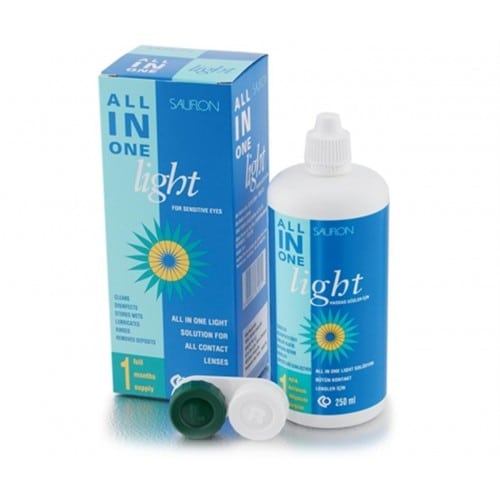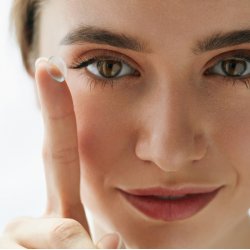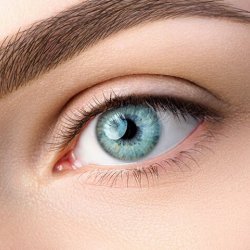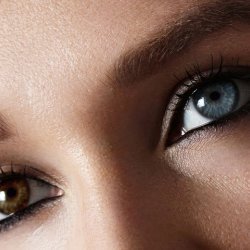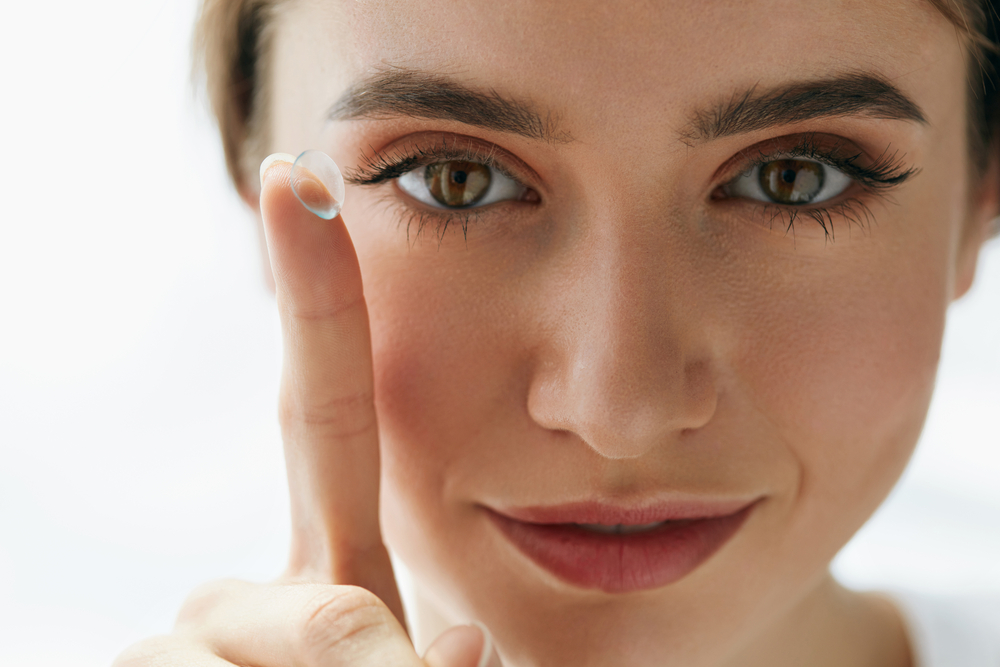
Φακοί επαφής, τι είναι;
Οι φακοί επαφής είναι δίσκοι οι οποίοι εφαρμόζουν στα μάτια με σκοπό την διόρθωση της όρασης. Παρουσιάζουν ραγδαία εξέλιξη ενώ οι χρήστες τους ανά το παγκόσμιο αυξάνονται συνεχώς λόγω των πλεονεκτημάτων που απολαμβάνουν σε σύγκριση με τα γυαλιά, ενω και το κόστος τους έχει μειωθεί σημαντικά. Η όρασή με φακούς επαφής είναι καλύτερη από ότι με τα γυαλιά διότι οι φακοί παρέχουν ευρύτερο πεδίο όρασης που δεν εμποδίζεται από το σκελετό, επίσης δεν προκαλούν πρισματική εκτροπή όπως τα γυαλιά, παρέχουν καλύτερη περιφεριακή όραση διότι οι φακοί κινούνται πάντοτε μαζί με το μάτι παραμένοντας στο σωστό κέντρο. Παρέχουν φυσική εμφάνιση χωρίς το μάτια να δείχνουν μεγαλύτερα ή μικρότερα απ ότι είναι στην πραγματικότητα, επιτρέπουν την ενασχόληση με τον αθλητισμό χωρίς το φόβο τραυματισμού από την θραύση των γυαλιών οράσεως, μπορούν να χρησιμοποιηθούν απροβλημάτιστα σε όλες τις καιρικές συνθήκες, και γενικότερα συμβάλλουν ώστε ο χρήστης να βλέπει καλά, να αισθάνεται καλά, και κατ επέκταση να φαίνεται καλά.
Πώς ανακαλύφθηκαν οι μαλακοί φακοί επαφής;
Οι μαλακοί φακοί επαφής οφείλουν την ανακάλυψη τους στον Τσέχο χημικό Ότο Βιχτέρλε το 1959. Ο Βιχτέρλε ήταν μέλος του Τσέχικου κοινοβουλίου με Δημοκρατικές απόψεις και αρχές, οι δημοκρατικές του απόψεις αποτέλεσαν αιτία να εκδιωχθεί από το κοινοβούλιο το 1961 και η συνταγή της ανακάλυψης του να πωληθεί από το Τσέχικο κράτος σε Αμερικάνικη εταιρεία. Ο Ότο Βιχτέρλε δυστυχώς δεν πήρε το παραμικρό χρηματικό ποσό από το Τσέχικο κράτος για την πώληση της ευρεσιτεχνίας του. Πέθανε τον Αύγουστο του 1988. Στην αναγγελία θανάτου του η πρώτη σε πωλήσεις Αμερικάνικη εφημερίδα Ουάσινγκτον Ποστ έγραψε: "Η εφεύρεσή του Τσέχου Ότο Βιχτέρλε εξελίχθηκε σε μια διεθνή επιχείρηση τζίρου πολλών δισεκατομμυρίων"
Τι κερδίζουν οι χρήστες φακών επαφής;
Όσοι έκαναν το "βήμα" μετάβασης από τα γυαλιά στους φακούς επαφής, μπορούν πλέον να διαλέγουν γυαλιά ηλίου χωρίς να ενδιαφέρονται για το αν αυτά επιδέχονται αλλαγές για να ενσωματώνουν διορθωτικούς φακούς ή όχι. Μπορούν να στέκονται στην βροχή χωρίς να χρειάζονται «υαλοκαθαριστήρες». Μπορούν να επιδοθούν σε αθλήματα, χωρίς το φόβο ότι τα γυαλιά οράσεως που φορούν ίσως σπάσουν. Απαλλάχθηκαν από το βάρος που γλιστρά συνέχεια από την μύτη τους, που θολώνει, «χαλαρώνει» και δημιουργεί κινδύνους σπασίματος ή λυγίσματος ενώ άλλος ένας σημαντικός παράγοντας είναι ότι βελτίωσαν αισθητικά την εμφάνισή τους.
Δεν φόρεσα ποτέ φακούς, όμως θέλω! Τι πρέπει να κάνω;
Αυτό που θα πρέπει να κάνετε είναι να απευθυνθείτε σε οφθαλμίατρο ή οπτικό/οπτομέτρη, ο οποίος αφού λάβει το ιστορικό σας, θα κάνει τις απαραίτητες μετρήσεις, και θα διαπιστώσει εάν κλινικά είστε σε θέση να φορέσετε φακούς επαφής. Αν σας κρίνει κατάλληλους τότε θα ακολουθήσει δοκιμαστική εφαρμογή με τις κατάλληλες τροποποιήσεις, όπου και όταν αυτές χρειάζονται, και φυσικά θα σας εκπαιδεύσει σύμφωνα με το πρωτόκολλο για την ορθή και ασφαλή χρήση φακών επαφής. Πάντοτε όμως θα πρέπει να ακολουθείτε τις οδηγίες του.
Είναι ασφαλής η χρήση φακών επαφής;
Η ασφαλής ή μη χρήση φακών επαφής εξαρτάται από εσάς. Εάν τηρείτε σχολαστικά τους κανόνες υγιεινής, ακολουθείτε πιστά τις οδηγίες χρήσης του κατασκευαστή και του οφθαλμίατρου ή οπτικού σας, τους αντικαθιστάτε πάντοτε σύμφωνα με τις οδηγίες του κατασκευαστή, πλένετε-στεγνώνετε καλά τα χέρια σας προτού έρθετε σε επαφή με τους φακούς τότε οι πιθανότητες μολύνσεων περιορίζονται σημαντικά. Μελέτες που συχνά βλέπουν το φώς της δημοσιότητας δυστυχώς αποδεικνύουν ότι το μεγαλύτερο ποσοστό ανθρώπων που χρησιμοποιεί φακούς επαφής δεν τηρεί το πρωτόκολλο ορθής χρήσης.
Πώς κάνω εφαρμογή ή αφαίρεση φακών επαφής;
Εφαρμογή φακών επαφής.
1) Πλύνετε σχολαστικά τα χέρια σας µε σαπούνι και στεγνώστε τα πολύ καλά με καθαρή πετσέτα, βγάλτε το φακό επαφής από την θήκη του.
2) Τοποθετήστε τον φακό επαφής στην άκρη του δείκτη σας με το κοίλο μέρος προς τα επάνω.
3) Τραβήξτε το κάτω βλέφαρο με το μεσαίο δάχτυλο και κοιτάξτε προς τα πάνω μέχρι να φανεί το λευκό μέρος του ματιού σας.
4) Τοποθετήσετε το φακό επαφής στο μάτι σας, βγάλτε το δάχτυλο σας και αφήστε το βλέφαρο σας, ανοιγοκλείσετε τα μάτια σας. Ο φακός θα έρθει και θα σταθεροποιηθεί στο κέντρο του ματιού σας. Μπορείτε επίσης να βάλετε τον φακό αµέσως επάνω στον κερατοειδή. Για να το πετύχετε, κοιτάξτε εστιάζοντας τον φακό και απαλά τοποθετήστε τον στο κέντρο του µατιού σας.
Αφαίρεση µαλακών φακών επαφής.
1) Πλύνετε σχολαστικά τα χέρια σας με σαπούνι και στεγνώστε τα πολύ καλά με καθαρή πετσέτα.
2) Κατεβάστε το φακό επαφής προς το λευκό τμήμα του ματιού με το δάκτυλο σας, πιέστε απαλά το φακό ανάμεσα στον δείκτη και τον αντίχειρα και σηκώστε τον έξω από το μάτι σας.
Πότε πρέπει να αντικαθίστανται οι μαλακοί φακοί επαφής;
Οι φακοί επαφής έχουν συγκεκριμένο χρονοδιάγραμμα χρήσης. Οι ημερήσιοι φακοί επαφής θα πρέπει να αντικαθίστανται σε καθημερινή βάση, δεν χρειάζονται καμία συντήρηση και μετά την χρήση τους πετάγονται. Οι εβδομαδιαίοι, οι δεκαπενθήμεροι, και οι μηνιαίοι, όπως το λέει και η ονομασία τους είναι φακοί επαφής οι οποίοι θα πρέπει να αντικαθιστώνται κάθε εβδομάδα κάθε δύο εβδομάδες ή κάθε μήνα αντίστοιχα. Χρήζουν διαδικασία καθαρισμού απολύμανσης και φύλαξης. Η ωφέλιμη διάρκεια χρήσης συνήθως αναγράφετε επάνω σε κάθε κουτί φακών επαφής, εάν δεν είστε σίγουροι ή δεν μπορείτε να εντοπίσετε την αναγραφή αυτή συμβουλευτείτε οφθαλμίατρο ή οπτικό η εναλλακτικά επισκεφτείτε τον επίσημο ιστότοπο του κατασκευαστή των φακών επαφής που χρησιμοποιείτε. ΠΟΤΕ μην χρησιμοποιείτε τους φακούς επαφής σας για μεγαλύτερο χρονικό διάστημα από εκείνο που προδιαγράφονται ακόμα και όταν δεν παρουσιάζουν εμφανή σημεία φθοράς. Αυτό έχει σχέση με την "γήρανση" των υλικών με τα οποία είναι κατασκευασμένοι οι φακοί επαφής, οπότε χάνοντας τις ιδιότητες τους δεν επιτρέπουν την σωστή οξυγόνωση του οφθαλμού, επίσης η επιφάνεια τους χάνει την λεία υφή την οποία είχαν όταν ήταν καινούριοι, έτσι αρχίζει και δημιουργείτε τριβή μεταξύ των φακών επαφής και των οφθαλμών σας με αποτέλεσμα την δυσάρεστη αίσθηση της τριβής και τους ερεθισμούς. Αξιοσημείωτο επίσης είναι οτι χάνοντας οι φακοί επαφής τις ιδιότητες τους ευνοούν την εισδοχή μικροοργανισμών και την ανάπτυξη μικροβίων τα οποία με την σειρά τους μπορούν να θέσουν σε κίνδυνο την υγεία των οφθαλμών σας.
Πρέπει να τρίβονται οι φακοί επαφής κατά την διαδικασία καθαρισμού;
Ναι συστήνεται. Παρότι στο εμπόριο σχεδόν όλα τα σύγχρονα υγρά καθαρισμού που κυκλοφορούν πλέον αναγράφουν πως οι φακοί επαφής δεν χρειάζονται τρίψιμο κατά την διαδικασία καθαρισμού (no rub) εντούτοις με το να τρίβετε τους φακούς επαφής σας κατά την διαδικασία καθαρισμού επιτυγχάνετε προς όφελος σας η απομάκρυνση της πρωτεϊνικής συσσώρευσης προσφέροντας σας τα καλύτερα δυνατά αποτελέσματα.
Επαρκεί η προστασία UV που παρέχουν ορισμένοι φακοί επαφής;
Αρκετοί φακοί επαφής ημερήσιοι καθώς και μηνιαίοι κατασκευαστικά έχουν ενσωματωμένο φίλτρο κατά της υπεριώδης ηλιακής ακτινοβολίας UV, η προστασία που παρέχουν στον χρήστη είναι θεμιτή δεν είναι όμως ολοκληρωτική. Σε χώρες με έντονη ηλιοφάνεια κατά την διάρκεια του έτους όπως είναι η Ελλάδα και η Κύπρος συστήνεται η χρήση ποιοτικών γυαλιών ηλίου για την μέγιστη δυνατή προστασία.
Ποιες οι κύριες κατηγορίες διαλυμάτων καθαρισμού φακών επαφής;
Τα υγρά φακών επαφής χωρίζονται σε δύο μεγάλες κατηγορίες. Τα λεγόμενα υγρά ψυχρού χημικού καθαρισμού και τα συστήματα καθαρισμού με συμβολή υπεροξειδίου του υδρογόνου.
Τα υγρά ψυχρού χημικού καθαρισμού είναι τα πλέον διαδεδομένα. Παρουσιάζουν το πλεονέκτημα ότι οι φακοί επαφής δεν χρειάζεται να ξεπλυθούν πριν την εφαρμογή τους.
Τα καθαριστικά συστήματα φακών επαφής με υπεροξείδιο του υδρογόνου κάνουν πιο ισχυρό καθαρισμό στους φακούς επαφής αλλά μπορούν να προκαλέσουν εγκαύματα αν βρεθεί ποσότητα μη εξουδετερωμένου υγρού στο μάτι. Θέλουν συγκεκριμένο χρόνο για την εξουδετέρωση του υπεροξειδίου του υδρογόνου μέσα στην ειδική θήκη (συνήθως 6 ώρες).
Το τελικό διάλυμα που προκύπτει μετά την εξουδετέρωση δεν παρουσιάζει απολύτως καμία μικροβιοκτόνο δράση.
Στο παρελθόν παρατηρήθηκαν αλλεργίες στα συστήματα υπεροξειδίου του υδρογόνου επειδή περιείχαν δύο ουσίες, την θειμεροσάλη και την χλωρεξιδίνη. Σήμερα οι ουσίες αυτές έχουν καταργηθεί
Η επιλογή της κατηγορίας διαλύματος γίνεται μετά από συζήτηση με τον οφθαλμίατρο ή τον εφαρμοστή ο οποίος θα σας βοηθήσει στην σωστή επιλογή διαλύματος για την κάλυψη των αναγκών σας.
Τι κάνω εάν δεν έχω υγρό φακών επαφής για να τους απολυμάνω;
Δεν υπάρχει εως σήμερα οποιοδήποτε υλικό υγρό ή στερεό το οποίο να μπορεί να χρησιμοποιηθεί ως υποκατάστατο του καθαριστικού υγρού των φακών επαφής. Οποιοδήποτε υγρό, όπως νερό της βρύσης, εμφιαλωμένο, αποσταγμένο νερό ή ακόμα και ο ενέσιμος αποστειρωμένος ορός που κυκλοφορεί στο εμπόριο θα βλάψει ή δεν θα καθαρίσει όπως πρέπει τους φακούς επαφής σας με αποτέλεσμα με την χρήση τους να θέσετε σε κίνδυνο την οφθαλμική σας υγεία.
Μπορώ να κάνω μπάνιο με φακούς επαφής;
Φακοί επαφής και κολύμβηση δεν πάνε μαζί! Αν όμως θέλετε μπορείτε να φοράτε τους φακούς και να χρησιμοποιείστε παράλληλα για σκοπούς προστασίας σας τα ειδικά γυαλιά κολύμβησης που κυκλοφορούν στο εμπόριο, ή μπορείτε εναλλακτικά να κάνετε χρήση ημερήσιων φακών επαφής, τους οποίους θα πρέπει να αφαιρέσετε και να πετάξετε αμέσως αφότου βγείτε από το νερό. Το νερό του δικτύου ύδρευσης όπως και το θαλασσινό όπως και της πισίνας επίσης δεν είναι συμβατό με τους φακούς επαφής οπότε οποιαδήποτε επαφή με τα παραπάνω υγρά θα τους βλάψει με αποτέλεσμα να θέσετε σε κίνδυνο την οφθαλμική σας υγεία.
Τι κάνω αν χάσω ένα φακό επαφής ή σκιστεί;
Θα πρέπει να αντικατασταθεί αμέσως, μια σοφή παροιμία λέει των φρονίμων τα παιδιά πριν πεινάσουν μαγειρεύουν, συνεπώς μια καλή λύση είναι να έχετε πάντοτε μαζί σας ημερήσιους φακούς επαφής.
Φακοί επαφής, μυωπία και εγκυμοσύνη
Κατά την διάρκεια της κύησης πολλές ορμονικές αλλαγές συμβαίνουν στον οργανισμό, αλλαγές οι οποίες μεταξύ άλλων συνήθως επηρεάζουν και την όραση. Αν προϋπάρχει μυωπία αυτή μπορεί να αυξηθεί κατά μέσο όρο μέχρι και ένα βαθμό, η αύξηση αυτή της μυωπίας είναι παροδική, επιστημονικά δεν υπάρχει ακριβής αιτιολογία όμως συσχετίζεται με την αύξηση στο πάχος του κερατοειδούς χιτώνα, την μεταβολή στην δακρυϊκή στοιβάδα καθώς επίσης και στην εμφάνιση παραμονή οιδήματος στον κερατοειδή κατά την διάρκεια της κύησης. Αναφορικά με την χρήση φακών επαφής κατά την κύηση θα πρέπει να συμβουλευτείτε τον οφθαλμίατρο ή τον οπτικό σας μιας και οι ορμονικές σας αλλαγές και ιδιαιτέρα η μεταβολή στην δακρυϊκή στοιβάδα κάνουν την εφαρμογή των φακών επαφής δυσκολότερη σε σχέση με το παρελθόν.
Τι να κάνω εάν κοιμηθώ με φακούς οι οποίοι δεν είναι ειδικοί για αυτό;
Οι φακοί επαφής θα πρέπει να αφαιρεθούν σας και να παρατηρήσετε για τυχόν ερεθισμό ή κοκκινίλες στα μάτια, εάν υπάρχει ερεθισμός θα πρέπει να ζητήθεί συμβουλή οφθαλμίατρου ή οπτικού. Μπορείτε να συμβουλευθείτε τον οφθαλμίατρο ή τον οπτικό σας για να σας ενημερώσει για τους φακούς επαφής νέας γενιάς Σιλικόνης υδρογέλης οι οποίοι επιτρέπουν σε αρκετούς χρήστες ακόμα και την εικοσιτετράωρη χρήση χωρίς να δημιουργούν ενοχλήσεις στα μάτια. Επίσης μπορείτε να ενημερωθείτε παρακάτω σε αυτό το μενού όπου αναφέρει πληροφορίες για φακούς επαφής νέας γενιάς Σιλικόνης Υδρογέλης.
Πώς χρησιμοποιώ λακ ή make-up με τους φακούς μου;
Eyliner, Mην βάλετε ποτέ eyeliner πιο μέσα από τη γραμμή των βλεφαρίδων, υπάρχουν μεγάλες πιθανότητες να φράξουν οι σμηγματογόνοι αδένες. Η μη προσεκτική χρήση eyeliner επίσης μπορεί να λερώσει τους φακούς επαφής σας.
Spray / λακ: Τα μάτια σας πάντοτε θα πρέπει να παραμένουν κλειστά όταν βάζετε spray ή λακ για τα μαλλιά. Περιμένετε να κατακαθίσουν τα σταγονίδια που αιωρούνται στην ατμόσφαιρα και μετά ανοίξετε τα μάτια σας. Η βλάβη στους φακούς επαφής που μπορεί να προκληθεί από spray ή λακ είναι μόνιμη, οι φακοί επαφής αχρηστεύονται και θα πρέπει να πεταχτούν.
Ιεραρχικά ακολουθήστε τα εξής, πρώτα θα πρέπει να χρησιμοποιείστε την λακ για τα μαλλιά σας, κατόπιν να εφαρμόσετε τους φακούς επαφής σας και μετά προσεκτικά να χρησιμοποιείστε το make-up σας.
Μπορούν οι φακοί επαφής να γλιστρήσουν πίσω από το μάτι;
Όχι, ποτέ δεν μπορεί να συμβεί αυτό διότι υπάρχει φυσικός φραγμός μεταξύ του εμπρόσθιου και του οπίσθιου μέρους του ματιού μας. Εάν λοιπόν ο φακός επαφής "χαθεί" μέσα στο μάτι θα πρέπει να μην πανικοβληθείτε και με ηρεμία να ερευνήσετε κάτω από το βλέφαρο σας, θα τον βρείτε συνήθως διπλωμένο κάτω από το επάνω βλέφαρο.


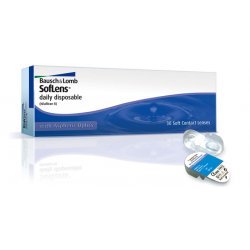
-250x250.jpg)
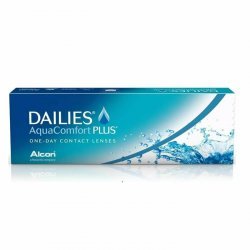
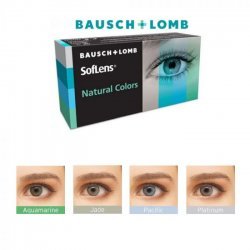
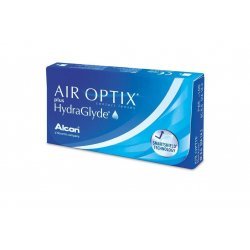

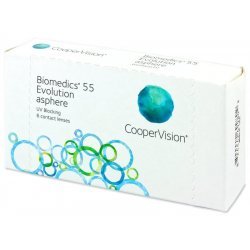

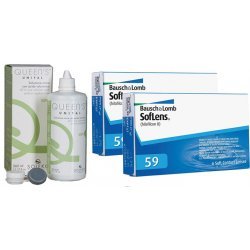

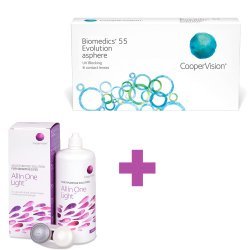
-250x250.jpg)





